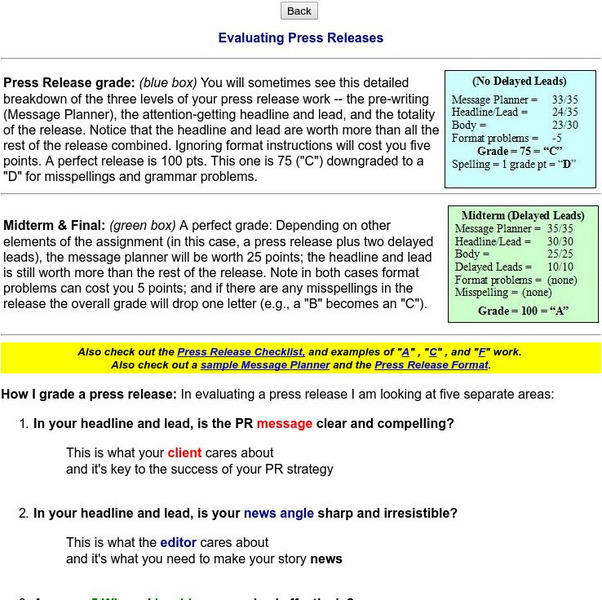ReadWriteThink
Read Write Think: Blogging With Photovoice: Sharing Pictures in Integrated Class
Photovoice is a technique that has participants take photos in response to a prompt, reflect on the meaning behind three of their photos, and share the photos to find common themes. It is an ideal strategy for all forms of classrooms,...
Thinkport Education
Thinkport: Read Like This: Using Informational Text Strategies
In this module practice working with informational text.
Thinkport Education
Thinkport: Research Simulation Task
Engage in a research process by analyzing a variety of print and non-print texts on the subject of bullying, identifying evidence regarding the topic, and using this new information to respond to questions about the text and the topic.
TESL Journal
The Internet Tesl Journal: Reading Nonfiction Texts Fast
Article lists a series of steps and tasks to make reading texts more efficient and clear. Written primarily for teachers of ESL students but tasks work for all students.
Capital Community College Foundation
Guide to Grammar and Writing: Classification and Analysis
This site provides some help reading an essay that deals with the classification and analysis of a piece of literature. Offers some instruction about the type of essay, a sample text, and guiding questions to help you analyze your own...
Curated OER
Neh: Edsit Ement: Walt Whitman's Notebooks and Poetry: The Sweep of the Universe
For this lesson plan, students will consider "Walt Whitman's Notebooks and Poetry: The Sweep of the Universe." The plan includes worksheets and other student materials that can be found under the resource tab.
AdLit
Ad lit.org: Five Areas of Instructional Improvement to Increase Academic Literacy
How can content-area, non-reading-specialist teachers contribute to academic literacy? They can incorporate these five techniques throughout their lessons: (1) provide explicit instruction and supported practice in effective...
AdLit
Ad lit.org: Analytical Writing in the Content Areas
Because writing is thinking, the organization of students' writing reflects both the structure of their thinking and the depth of their understanding. Students should be writing in all their classes, explaining what they know and how...
AdLit
Ad lit.org: Teaching Content Knowledge and Reading Strategies in Tandem
Many areas of instruction can have a rippling effect for the expansion of readers' repertoire of skills, including pre-reading, predicting, testing hypotheses against the text, asking questions, summarizing, etc. Literacy-rich,...
AdLit
Ad lit.org: An Introduction to Analytical Text Structures
Many students are used to writing narratives - stories, description, even poetry, but have little experience with analytical writing. This article is an introduction to six analytical text structures, useful across content areas. See...
Scholastic
Scholastic: Lesson Plan for Nonfiction Comprehension: Skimming Text
Build comprehension by developing reading strategies for use with nonfiction text. This lesson focuses on teaching students to recognize text elements as clues to help them quickly locate key information in text.
Curated OER
Mc Graw Hill: Part 2 Reading: Informational Text: Summarize
Learn how to summarize a text based on the main idea and supporting details you found.
Grammarly
Grammarly Handbook: Patterns of Organization for Academic Texts
A list of six different ways to organize a text with links to more information for each.
Polk Brothers Foundation Center for Urban Education at DePaul University
De Paul University: Center for Urban Education: Classify and Summarize Information [Pdf]
This learning module contains a link to graphic organizers that will help students categorize content and comprehend short and extended texts. The graphic organizers are designed to be applied to reading nonfiction passages in science...
Polk Brothers Foundation Center for Urban Education at DePaul University
Depaul University: Center for Urban Education: Interpet History [Pdf]
Students will read about a historical event and then illustrate their interpretations. Questions are included to extend the students' comprehension of the events.
Curated OER
Mc Graw Hill: Part 2 Reading: Informational Text: Show Understanding of Text
This quick activity includes a passage from an information text, and explains reading comprehension strategies to use to answer questions.
Other
Secondary Lesson Guide for Writing Journalism
Excellent lesson plan page geared towards teachers and students interested in learning how to write feature stories and also learn basic writing tenets. Very practical site.
Other
Audiblox: Foundational Reading Skills
What types of reading skills do students need to be successful? This informative site focuses on students with learning disabilities. Explore!
Other
Eduscapes: Themes & Literature Circles
This site provides guidance in creating literature circles based on cross-curricular themes that will help to improve literacy. The site emphasizes both theory and practice, with lots of practical suggestions.
Other
Wilfrid Laurier University: Paragraph Writing [Pdf]
This site from the Wilfrid Laurier University provides a complete guide to paragraph writing. Contains many examples along with details and structures that are often left out when students write.
Other
Text Help: Middle Grades Informational Text [Pdf]
A useful resource with ideas for teachers to meet the Common Core Standard 8.3 for informational text. The ideas are designed for use with the program Read and Write Gold, but could be implemented on paper.
Other
Ic You See: T Is for Thinking: Guide to Critical Thinking
This clearly presented tutorial can be used by individuals or could be presented to a class. Be sure to take the interactive quiz for some thought-provoking exercises.
Other
Kid Bibs: Effective Use of Textbook Features
Here, parents and teachers can find tips for helping young readers understand the expository writing found in textbooks.


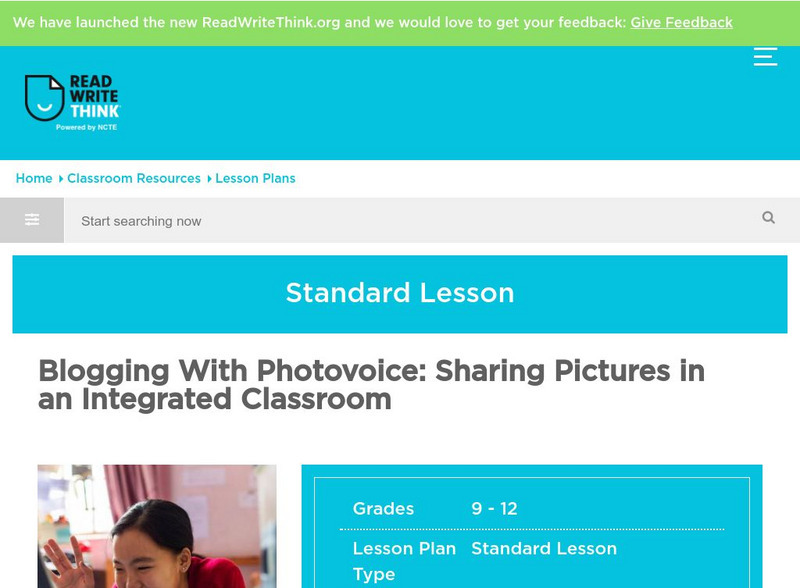


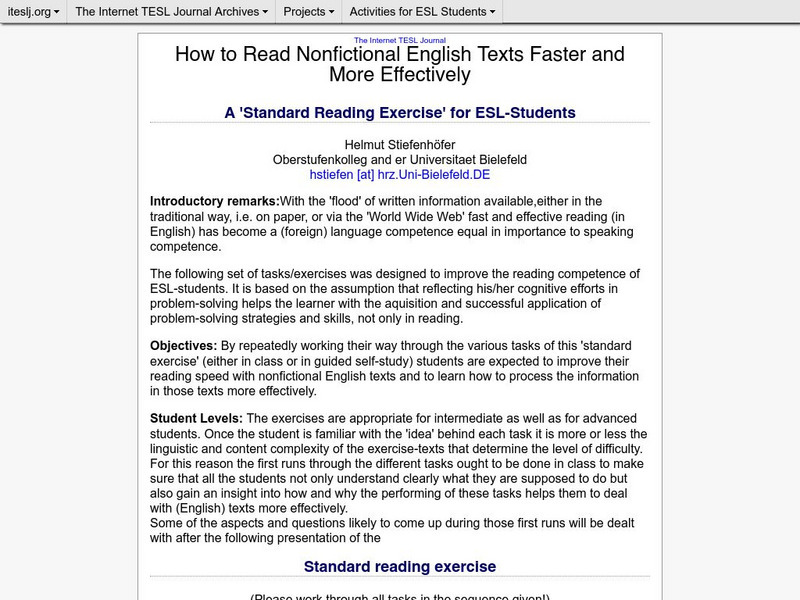




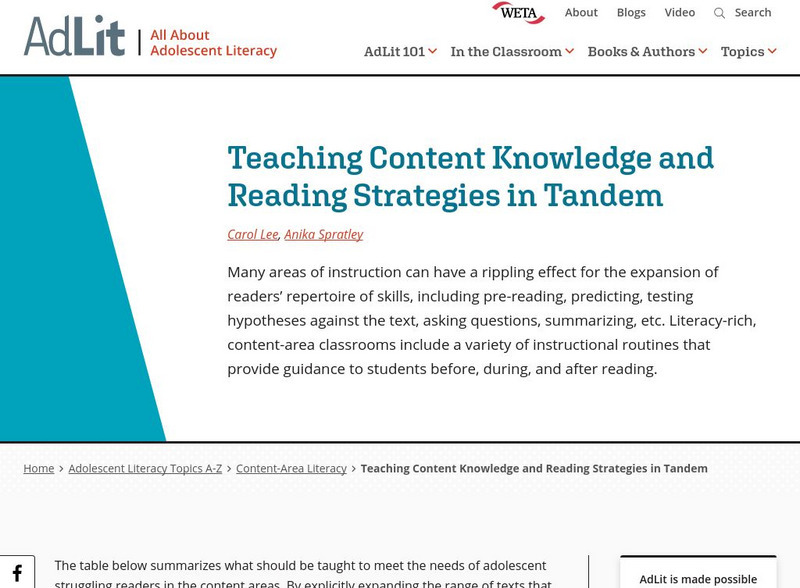

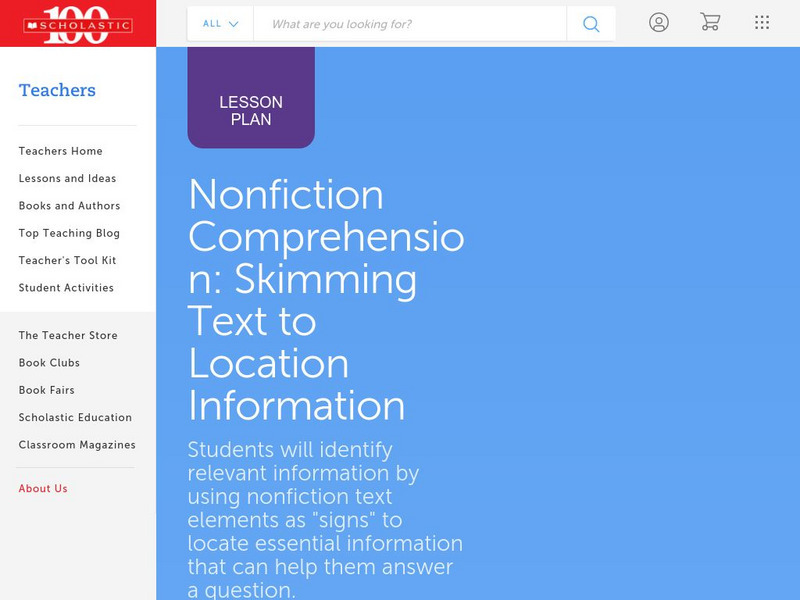
![De Paul University: Center for Urban Education: Classify and Summarize Information [Pdf] Unit Plan De Paul University: Center for Urban Education: Classify and Summarize Information [Pdf] Unit Plan](https://content.lessonplanet.com/knovation/original/78057-7ba90e0b8b82fde8e26d306a4af31f79.jpg?1661787062)

